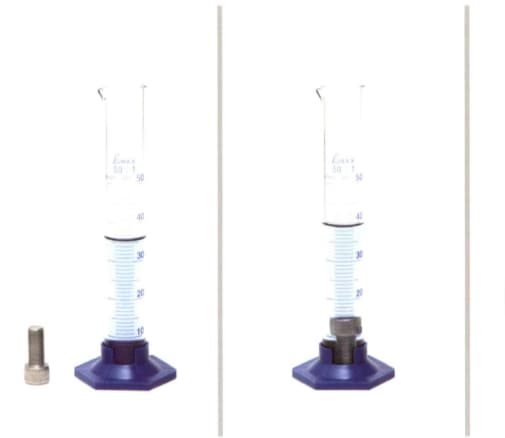Archimedes' Principle
Archimedes' Principle: Overview
This topic covers concepts, such as, Buoyancy, Buoyant Force, Floating and Sinking of Object, Archimedes Principle, Application of Archimedes Principle, Fluid, Density of a Substance & Unit of Density of a Substance etc.
Important Questions on Archimedes' Principle
A litre bottle is filled up completely with a liquid. The mass of the bottle is when it is hung from the spring balance. If the bottle have negligible mass, _____ is the density of the liquid filled into the bottle.
A litre bottle is filled up completely with a liquid. The mass of the bottle is when it is hung from the spring balance. If the bottle have negligible mass, what is the density of the liquid filled into the bottle? ( in gram per cc)
Describe an application where having a material that is much less dense than steel would be useful.
A hollow metal sphere has a volume of , it has a mass of . It is placed in water which has a density of . Which statement best explains what happen?
The table gives the masses, volumes, and densities of some objects.
| Object | Mass (g) | Volume (cm3) | Density (g/cm3) |
| helium balloon | 14.100 | 0.00025 | |
| log | 6.800 | 0.8 | |
| grain of sand | 0.0032 | 0.002 |
By calculating the missing values in the table find out which object is the largest.
The table gives the masses, volumes, and densities of some objects.
| Object | Mass (g) | Volume (cm3) | Density (g/cm3) |
| helium balloon | 14.100 | 0.00025 | |
| log | 6.800 | 0.8 | |
| grain of sand | 0.0032 | 0.002 |
By calculating the missing values in the table find out which objects will float in the air?
The table gives the masses, volumes, and densities of some objects.
| Object | Mass (g) | Volume (cm3) | Density (g/cm3) |
| helium balloon | 14.100 | 0.00025 | |
| log | 6.800 | 0.8 | |
| grain of sand | 0.0032 | 0.002 |
By calculating the missing values in the table find out which objects will float on water?
The table gives the masses, volumes, and densities of some objects.
| Object | Mass (g) | Volume (cm3) | Density (g/cm3) |
| helium balloon | 14.100 | 0.00025 | |
| log | 6.800 | 0.8 | |
| grain of sand | 0.0032 | 0.002 |
By calculating the missing values in the table find out which object is the lightest.
The picture below shows how to measure the density of an object. At first, there is of water in the measuring cylinder. When the bolt is added to the measuring cylinder, the water level rises to . The mass of the bolt is . What is the density of the bolt.

A Plank of wood is 3 cm thick,16 cm wide, and 75 cm long.

Another block of wood has a mass of 384 g and is a cube of a side length of 8 cm. Is this a block of wood more or less dense than the first plank of wood (Density =)?
A Plank of wood is 3 cm thick,16 cm wide, and 75 cm long.

The plank of wood has a mass of 1,800 g. calculate the density of the wood.
Density is defined as the mass per unit volume of a substance.
While floating the weight of the body is equal to the upthrust.
The center of _____ is the point where the total buoyant force or upthrust due to the fluid displaced by the immersed part of the body acts.
(mass / buoyancy)
The volume of a substance is . The mass of the substance if its relative density is will be
Buoyant force exerted by different fluids on a given body is :
If a body is compressed to half its previous volume, its density:
Find the density(in ) of the substance if the mass of the substance is and volume is .
(Choose from the following: )
